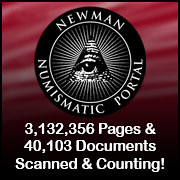
About UsThe Numismatic Bibliomania Society is a non-profit association devoted to the study and enjoyment of numismatic literature. For more information please see our web site at coinbooks.org SubscriptionsThose wishing to become new E-Sylum subscribers (or wishing to Unsubscribe) can go to the following web page link MembershipThere is a membership application available on the web site Membership Application To join, print the application and return it with your check to the address printed on the application. Print/Digital membership is $40 to addresses in the U.S., and $60 elsewhere. A digital-only membership is available for $25. For those without web access, write to: Charles Heck, Treasurer AsylumFor Asylum mailing address changes and other membership questions, contact Chuck at this email address: treasurer@coinbooks.org SubmissionsTo submit items for publication in The E-Sylum, write to the Editor at this address: whomren@gmail.com
BUY THE BOOK BEFORE THE COINSale Calendar
|
- WAYNE'S WORDS: THE E-SYLUM JULY 26, 2020
- KOLBE & FANNING BUY OR BID SALE NUMBER 13
- NEW BOOK: COLONIAL HISTORY IN YOUR HANDS
- NEW BOOK: THE FIRST MEDALS OF AMERICA
- NEW BOOK: ALABAMA OBSOLETE NOTES 1818-1885
- BOOK REVIEW: 100 GREATEST MODERN WORLD COINS
- ALAN ANTHONY (1950-2020)
- A VERMONT NUMISMATIC ENIGMA
- VIDEO: GILROY ROBERTS NUMISMATIC PROFILE
- VIDEO CONFERENCE: ANS FROM ACORN TO SAPLING
- MINT DIRECTOR MOY ON THE COVID-19 COIN SHORTAGE
- NOTES FROM E-SYLUM READERS: JULY 26, 2020
- TAMS 2020 ANNUAL MEETING GOES VIRTUAL
- LANGE: PRR LOCOMOTIVE, 1ST SHIELD NICKEL FOLDER
- VOCABULARY TERM: METALLIZED SURFACE
- REV. MARK RICHARDS WATKINSON (1824-1877)
- ZECHMAN, FEITL RECEIVE ANA 2020 SCHOLARSHIPS
- S.S. CENTRAL AMERICA TREASURES IN GOLDBERG'S SALE
- 2020 ANA INNOVATION DOLLAR NGC SLAB OFFERED
- WOKEFIELD IRON AGE GOLD COIN FIND
- COINAGE OF THE EMPRESS IRENE
- WAYNE'S NUMISMATIC DIARY: JULY 26, 2020
- TRUMP PRESIDENTIAL MEDAL DESIGNS RECOMMENDED
- TRUMP-REAGAN FUNDRAISING COIN KERFUFFLE
- THE FIVE UNIQUE SPEELMAN-WHITE UNCUT SHEETS
- GRINNELL SERIES 1914 AND 1918 FRN PROOFS
- COSTA RICA ISSUES NEW POLYMER BANKNOTES
- INDIAN INDEPENDENCE BRITISH NOTE COUNTERFEITS
- THE NEW YORK FEDERAL GOLD VAULT
- LOOSE CHANGE: JULY 26, 2020
- PLAYFUL ORIGAMI USING BANKNOTES
- FEATURED WEB PAGE: LATIN AMERICAN BANKNOTE MAPS
Click here to access the complete archive
Click here to unsubscribe (scroll down)
To comment or submit articles, reply to whomren@gmail.com
Content presented in The E-Sylum is not necessarily researched or independently fact-checked, and views expressed do not necessarily represent those of the Numismatic Bibliomania Society.
WAYNE'S WORDS: THE E-SYLUM JULY 26, 2020
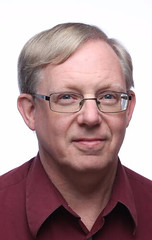 New subscribers this week include:
David Weidgenannt of the Institute for Numismatics and Monetary History at the University of Vienna;
Bob Campbell, Steve Hatfield, Peter Jones, Gary Pierson and hundreds of other former ANA Edition readers. While we no longer publish an edition to members of the American Numismatic Association, the ANA kindly invited those readers to subscribe here, and they did in droves, at a rate sometimes as high as 2 or 3 per minute.
Welcome aboard! We now have 6,483 subscribers.
New subscribers this week include:
David Weidgenannt of the Institute for Numismatics and Monetary History at the University of Vienna;
Bob Campbell, Steve Hatfield, Peter Jones, Gary Pierson and hundreds of other former ANA Edition readers. While we no longer publish an edition to members of the American Numismatic Association, the ANA kindly invited those readers to subscribe here, and they did in droves, at a rate sometimes as high as 2 or 3 per minute.
Welcome aboard! We now have 6,483 subscribers.
Thank you for reading The E-Sylum. If you enjoy it, please send me the email addresses of friends you think may enjoy it as well and I'll send them a subscription. Contact me at whomren@gmail.com anytime regarding your subscription, or questions, comments or suggestions about our content.
This week we open with a numismatic literature sale, three new books, a review, updates from the Newman Numismatic Portal and more.
Other topics this week include colonial coins, Comitia Americana medals, U.S. Mint engraver Gilroy Roberts, the early history of the American Numismatic Society, auction offerings of S.S. Central America treasure coins, Trump Presidential Medal designs, the Speelman-White uncut sheets, and Costa Rica's new banknotes.
To learn more about Dr. Peter Jones, Alan Anthony, Alabama obsolete notes, the "Vermont Numismatic Enigma", A. M. Smith publications, $10,000 notes, the Dickeson Continental Dollar, the Lesher House Restoration Souvenir dollar, and the New York Federal Reserve Bank gold vault, read on. Have a great week, everyone!
Wayne Homren
Editor, The E-Sylum
KOLBE & FANNING BUY OR BID SALE NUMBER 13
Numismatic Booksellers Kolbe & Fanning submitted this announcement of their thirteenth "Buy or Bid Sale" which closes on August 4, 2020. Good luck, everyone! -Editor
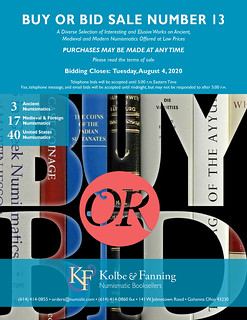 Kolbe & Fanning Numismatic Booksellers have announced our thirteenth "Buy or Bid Sale,” which begins now and will close on Tuesday, August 4, 2020. With hundreds of new additions, the sale focuses on modestly priced books, giving collectors an opportunity to add to their libraries at minimal cost.
Kolbe & Fanning Numismatic Booksellers have announced our thirteenth "Buy or Bid Sale,” which begins now and will close on Tuesday, August 4, 2020. With hundreds of new additions, the sale focuses on modestly priced books, giving collectors an opportunity to add to their libraries at minimal cost.
The sale includes over 1400 works on ancient, medieval and modern coins, as well as general works, periodicals and sale catalogues. "Buy” prices have been kept low to promote sales. To further encourage participation, the firm is offering free domestic shipping to bidders spending at least $300; there is also no packing and processing fee for this sale. Again, please read the Terms of Sale before participating.

NEW BOOK: COLONIAL HISTORY IN YOUR HANDS
Author Peter Jones has published a new book on U.S. colonial coinage. Congratulations! See the web page and click the "See Inside" link for a preview, including an introduction by John Kraljevich and a thorough review of earlier classification schemes and a reasoned recommendation for a revision to how these issues have been organized in the past. -Editor
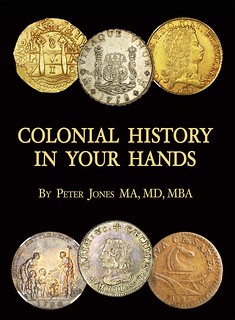 Colonial History in Your Hands
Colonial History in Your Hands
A Colonial Coin Collector's Collection
by Peter Jones
Genre: ANTIQUES And COLLECTIBLES
Subgenre: Coins, Currency & Medals
Language: English
Pages: 598
Format: Hardcover
Hardcover ISBN: 9781098317553
Price: $89 Net
Overview
Colonial History in Your Hands is about colonial American coins. A lifelong collector, Jones explores different classification systems of colonial coins, then gives the fascinating stories behind each coin with up to date scholarship on the current thoughts about each series.
The book is profusely illustrated with color photos, and includes full page pictures of almost 300 coins. The book is 8.5 by 11 hard back with 597 pages. Foreword by John Kraljevich.
NEW BOOK: THE FIRST MEDALS OF AMERICA
Peter Jones also published a new book on Comitia Americana and associated medals, the first medals of America. I'll look forward to seeing them both. -Editor
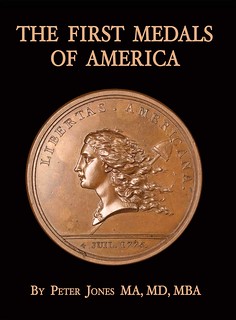 The First Medals of America
The First Medals of America
Comitia Americana and Associated Medals
by Peter Jones
Genre: HISTORY
SubGenre: United States / Revolutionary Period (1775-1800)
Language: English
Pages: 100
Format: Hardcover
Hardcover ISBN: 9781098325190
Price: $29.99 Net
Overview
People interested in coin collecting, medal collecting, and American Revolutionary history will enjoy this read. The American Continental Congress issued eleven medals for valor during the American Revolution. This book tells the stories behind these brave men and their exploits, and the long process of procuring their individual medals. America had no generic medal for valor at the time. They also had no mint, so had to have France and their sculptors create each medal. This was a labor of love for Franklin and Jefferson while they were Ambassadors to France. Thomas Jefferson himself collected the medals, and presented a set of them to George Washington. Collectors of these medals often include other medals sculpted by the same engravers and struck in Paris relating to the American Revolution. Twenty-six medals are pictured in full page color photographs. The book includes full information about types of medals available and their cost. Foreword by Neil Musante.
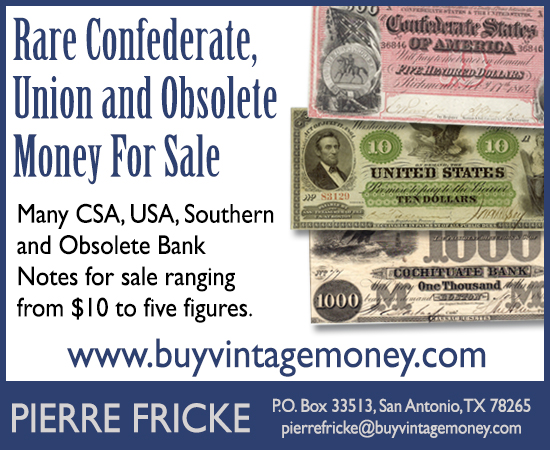
NEW BOOK: ALABAMA OBSOLETE NOTES 1818-1885
A new catalog of Alabama obsolete notes has been published. Congratulations to authors Bill Gunther and Charles Derby. As a summary, here's the book's Preface by Mack Martin, author of State of Georgia Treasury Notes, Treasury Certificates, and Bonds. A Comprehensive Collector's Guide. -Editor
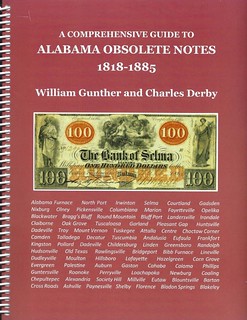 As a collector of obsolete paper money, I certainly enjoyed browsing through and participating
in this new Alabama book, A Comprehensive Guide to Alabama Obsolete Notes 1818-1885, by
Bill Gunther and Charles Derby. The authors have undertaken a complete listing of the
currently known paper money from the State of Alabama from 1818 to 1885. This book is
designed to be a collector's guide that lists notes from all cities, counties, and issuers including
national notes, state notes, and private scrip from Alabama counties, towns, railroads, and
merchants. Cross-over notes involving other states are also represented. The notes are
illustrated in vivid color and are listed using a new, easy to understand numbering system that
includes many variations of notes based on dates, designs, fonts, and text details. Rarity values
using the 1 to 7 scale of Walter Rosene Jr., who wrote the 1984 catalog on Alabama obsolete
currency, are updated, and prices are listed in low, high, and average values.
As a collector of obsolete paper money, I certainly enjoyed browsing through and participating
in this new Alabama book, A Comprehensive Guide to Alabama Obsolete Notes 1818-1885, by
Bill Gunther and Charles Derby. The authors have undertaken a complete listing of the
currently known paper money from the State of Alabama from 1818 to 1885. This book is
designed to be a collector's guide that lists notes from all cities, counties, and issuers including
national notes, state notes, and private scrip from Alabama counties, towns, railroads, and
merchants. Cross-over notes involving other states are also represented. The notes are
illustrated in vivid color and are listed using a new, easy to understand numbering system that
includes many variations of notes based on dates, designs, fonts, and text details. Rarity values
using the 1 to 7 scale of Walter Rosene Jr., who wrote the 1984 catalog on Alabama obsolete
currency, are updated, and prices are listed in low, high, and average values.
One of the major enjoyments that I have in collecting these notes is researching and learning about the stories of their origins and history. This is a highlight of this book, as it includes such information on many of the notes. This inclusion is not unexpected given that Gunther and Derby are scholars of Alabama and other Southern paper money and frequently publish articles on the subject in the Society of Paper Money Collectors' magazine, Paper Money.

BOOK REVIEW: 100 GREATEST MODERN WORLD COINS
On July 21, 2020 Lou Golino published a review on CoinWeek of the Whitman book 100 Greatest Modern World Coins by Charles Morgan and Hubert Walker. Here's a short excerpt - see the complete article online. -Editor
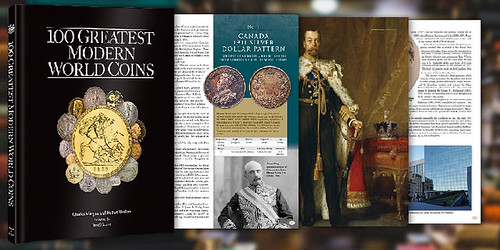
In choosing their 100 greatest world coins of the 20th century, the authors build on the criteria set forth in the first Whitman book in the "100 Greatest” series, Jeff Garrett and Ron Guth's 100 Greatest U.S. Coins, which were: rarity, value, quality, popularity, beauty and history.
But unlike the coins of the earlier volume that form a homogenous group, the much more diverse group of coins issued around the world since 1901 required a different set of criteria for the authors, which are: rarity; innovation (such as new metal alloys, new motifs, and coinage reforms); coin sets (a number of the greatest world coins include special coin sets or were part of sets); oddities and emergency issues, such as coins issued just before a leader was overthrown; and auction and market values.
Emphasis on Rarity
THE BOOK BAZARRE
ALAN ANTHONY (1950-2020)
Author Roger Moore of the Colonial Coin Collectors Club submitted this remembrance of collector and researcher Alan Anthony of Leesburg, VA. Thank you. -Editor
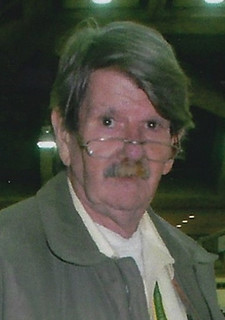 The passing of Alan on July 23, 2020 was a blow for all of us. We have lost a friend and a colleague who was knowledgeable in many areas of colonial numismatics and willing to openly share that knowledge with anyone willing to talk. He has been described as a reserved "good ole boy,” whose gravelly voice, when he spoke, was distinctive. Because he was reticent in talking about himself, many of us know little about his background. His wife – Kathy – helped to fill in some of the details:
The passing of Alan on July 23, 2020 was a blow for all of us. We have lost a friend and a colleague who was knowledgeable in many areas of colonial numismatics and willing to openly share that knowledge with anyone willing to talk. He has been described as a reserved "good ole boy,” whose gravelly voice, when he spoke, was distinctive. Because he was reticent in talking about himself, many of us know little about his background. His wife – Kathy – helped to fill in some of the details:
Alan graduated high school in 1969, was drafted into the Army Infantry, and wound up doing a year in Vietnam. His eyesight was so good, he was quickly trained as a sniper. He was lucky to survive and was shot only once. Feeling bullet proof upon his return home, he raced cars and motorcycles at Summit Point and Road Atlanta and finally settled into a job as an auto mechanic after turning down training for Air Traffic Control. Working in many shops, he achieved a master mechanic rating in 7 out of 8 ASE certifications. After a time, he was promoted to General Manager of Herndon Automotive. He worked 12 hour days 6 days a week for many years. Through it all was always his love of coins.
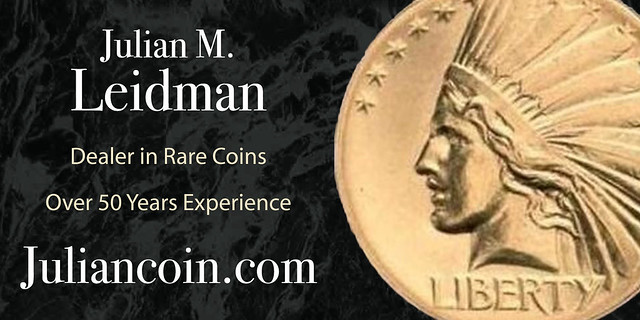
A VERMONT NUMISMATIC ENIGMA
The latest addition to the Newman Numismatic Portal is a video on the "Vermont Numismatic Enigma". Project Coordinator Len Augsburger provided the following report. Thanks. -Editor
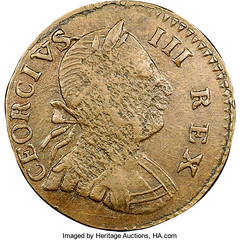
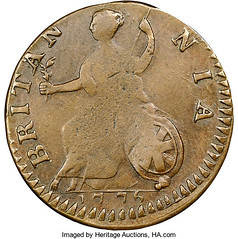
Getting to Know Eric P. Newman, Part 3: A Vermont Numismatic Enigma
Lianna Spurrier continues her video series on numismatic publications of Eric P. Newman, with the latest installment focusing on his 1958 publication "A Recently Discovered Coin Solves a Vermont Numismatic Enigma.” In this article, Newman sought to explain why Vermont coppers minted during the Confederation period bore British insignia. With an assist from Walter Breen, Newman uncovered a punch interlock between certain 1786 Vermont coppers and Machin's Mills counterfeit halfpence of the same period, demonstrating that the British Union was intentionally reused on the Vermont reverse die, most likely as a cost saving measure. Today, about a dozen examples of the "Vermont Enigma” die pairing are known, with the finest piece selling in the Newman IV sale in 2014.
Images: The Vermont Enigma coin, 1776 Machin's Mills Halfpence, NGC MS62 Brown, Vlack 9-76B, Breen Encyclopedia plate coin, ex. Newman IV (Heritage Auctions, 11/2014, lot 3030, realized $35,250).
Link to A Vermont Numismatic Enigma video on Newman Portal:
https://nnp.wustl.edu/library/book/586143
VIDEO: GILROY ROBERTS NUMISMATIC PROFILE
These are selections from the David Lisot Video Library that feature news and personalities from the world of coin collecting. David has been attending coin conventions since 1972 and began videotaping in 1985. The Newman Numismatic Portal now lists all David's videos on their website at:
https://nnp.wustl.edu/library/multimediadetail/522852
This one is an in-depth interview with U.S. Mint engraver Gilroy Roberts. -Editor
Gilroy Roberts Numismatic Profile, March 14, 1991, 2 of 2
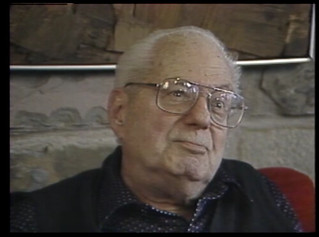 Hear and see the great medallic sculptor Gilroy Roberts in this in-depth interview conducted by David Lisot. Gilroy shares his childhood and what inspired him to become an artist. He discusses his days at the U.S. Mint when he had the opportunity to design the Kennedy half dollar. He tells of his prolific artistic creations at the Franklin Mint. This interview is an inspiration into the creative spirit as told by one of the most successful sculptors of all time. Interviewed by David Lisot.
Hear and see the great medallic sculptor Gilroy Roberts in this in-depth interview conducted by David Lisot. Gilroy shares his childhood and what inspired him to become an artist. He discusses his days at the U.S. Mint when he had the opportunity to design the Kennedy half dollar. He tells of his prolific artistic creations at the Franklin Mint. This interview is an inspiration into the creative spirit as told by one of the most successful sculptors of all time. Interviewed by David Lisot.
The video is available for viewing on the Newman Numismatic Portal at:
https://nnp.wustl.edu/library/book/548839
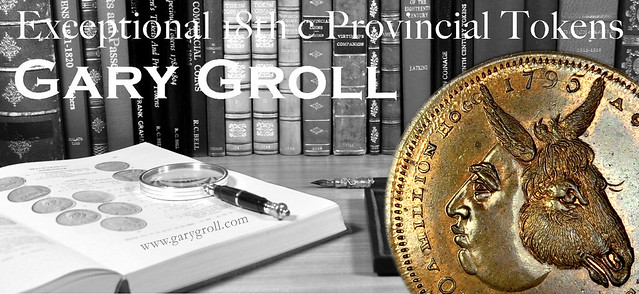
VIDEO CONFERENCE: ANS FROM ACORN TO SAPLING
Another American Numismatic Society Money Talks video conference has been scheduled. NOTE: these are open to members only. Great time to join! This is a great topic for numismatic bibliophiles and students of U.S. numismatic history. -Editor
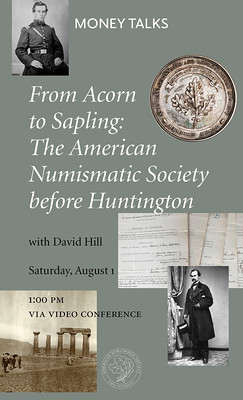 MONEY TALKS
MONEY TALKS
From Acorn to Sapling: The American Numismatic Society before Huntington
With David Hill
Saturday, August 1
1:00 pm ET
This Money Talks will be held live via video conference. As with any Money Talks, you will be able to ask questions and hear responses in real time. The session is open to ANS members only. RSVP to Emma Pratte at membership@numismatics.org to get the link.
The ANS's symbol is the mighty oak grown from a tiny acorn. But the tree didn't become fully rooted until after 1905, when Archer Huntington—who gave the Society a building, a professional staff, and a firm commitment to scholarly publishing—became president. We will look at the Society during its pre-Huntington, "sapling” years, taking into consideration its members as well as other nineteenth-century numismatic groups.
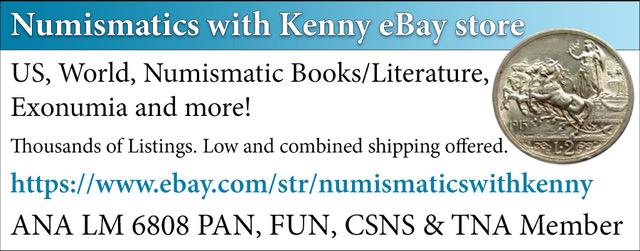
MINT DIRECTOR MOY ON THE COVID-19 COIN SHORTAGE
Former U.S. Mint Director Ed Moy published an article on Newsmax Finance about the coronavirus coin shortage. Here's an excerpt. -Editor
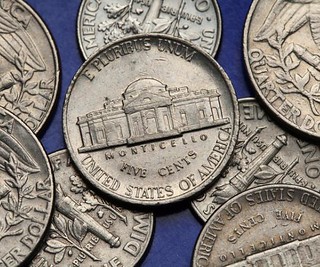 The amount of coins in the economy hasn't changed. It is the flow of those coins that has.
The amount of coins in the economy hasn't changed. It is the flow of those coins that has.
Businesses make and receive change when customers pay in cash. Then these businesses deposit coins at their banks. There, the worn-out ones are culled and the rest are wrapped in rolls that businesses use when they run low.
When banks run low, they order more from the Federal Reserve, and when the Fed's inventory runs low, they place orders for more from the United States Mint.
This is the normal circulation of coins. COVID has disrupted it.
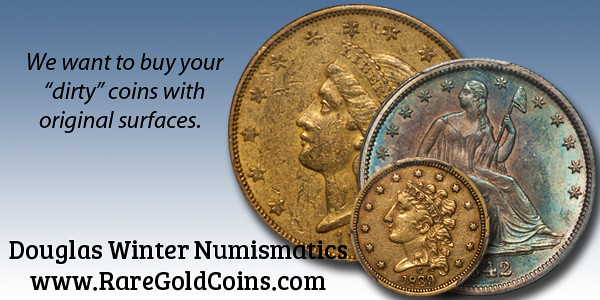
NOTES FROM E-SYLUM READERS: JULY 26, 2020
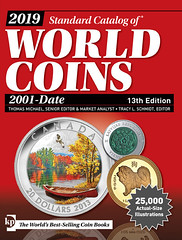 Topics this week include
A. M. Smith Publications,
Russian-Printed 1944 Germany 10 Mark Allied Military Notes,
Fate of the Krause Standard Catalogs,
Editions of The Coinage of Tripura,
Thoughts on The Case of the Bogus Burning Bill,
a Trade Token Mudlark Find,
the Horseshoe Casino $10,000 Notes, and
Japan's Emperor Akihito and Naruhito Coins.
Topics this week include
A. M. Smith Publications,
Russian-Printed 1944 Germany 10 Mark Allied Military Notes,
Fate of the Krause Standard Catalogs,
Editions of The Coinage of Tripura,
Thoughts on The Case of the Bogus Burning Bill,
a Trade Token Mudlark Find,
the Horseshoe Casino $10,000 Notes, and
Japan's Emperor Akihito and Naruhito Coins.
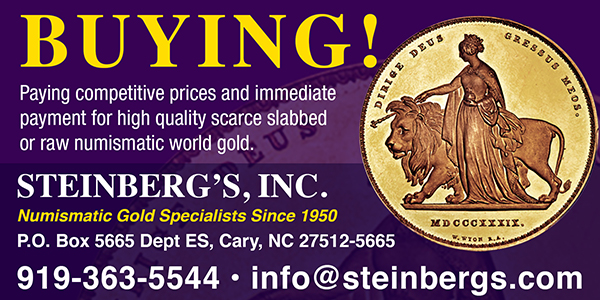
TAMS 2020 ANNUAL MEETING GOES VIRTUAL
The Token and Medal Society will be holding its 2020 Annual Meeting online. Here's the announcement. -Editor
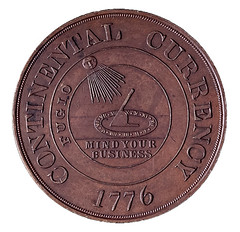
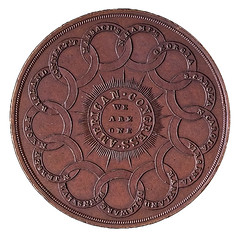
Owing to the cancellation of the ANA World's Fair of Money in August, the Token and Medal Society will hold its annual meeting virtually on Zoom, Wednesday, August 5, 2020 at 2 PM Eastern, 11 AM Pacific Coast time. Members, and others interested in tokens and medals, are invited to join the board for the introduction of new officers and the presentation of annual awards. As is the tradition of the TAMS general meeting, we will feature a program from TAMS members sharing items from their collecting interests. This year Hyder and Shevlin will present new research on the origin of the Dickeson Continental Dollar and the probable and known history of the disposition of the dies.
To access the meeting send an email to either Bill Hyder basktmkr@pacbell.com, Jeff Shevlin socalledguy@hotmail.com or Ernie Nagy ernienagy@gmail.com for the Zoom meeting link and id.
LANGE: PRR LOCOMOTIVE, 1ST SHIELD NICKEL FOLDER
Researcher and author David Lange submitted these notes related to items appearing in our previous issue. Thanks! -Editor
As so often happens, I found something of specific interest in the latest issue that warrants a few comments.
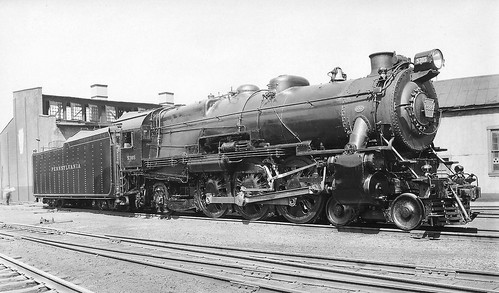
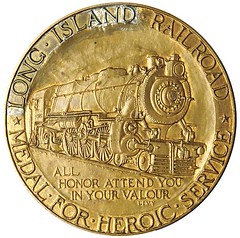 As a youngster my interest in coin collecting had to compete with an equal passion for railroading, both the real thing and in model form. The Pennsylvania Railroad medal for heroic service submitted by Kristen Reichardt depicts that line's celebrated K-4 locomotive, a passenger hauler so successful that 425 examples were built. It has a 4-6-2 wheel configuration, known generically as a Pacific Type. It became a symbol of fast and reliable passenger service starting in 1914 and lasting through the end of steam on the PRR in the late 1950s. Needless to say, there have been many models offered of this superstar in various scales over the years. I'm attaching a photo of No. 5385 that reveals its handsome profile.
As a youngster my interest in coin collecting had to compete with an equal passion for railroading, both the real thing and in model form. The Pennsylvania Railroad medal for heroic service submitted by Kristen Reichardt depicts that line's celebrated K-4 locomotive, a passenger hauler so successful that 425 examples were built. It has a 4-6-2 wheel configuration, known generically as a Pacific Type. It became a symbol of fast and reliable passenger service starting in 1914 and lasting through the end of steam on the PRR in the late 1950s. Needless to say, there have been many models offered of this superstar in various scales over the years. I'm attaching a photo of No. 5385 that reveals its handsome profile.
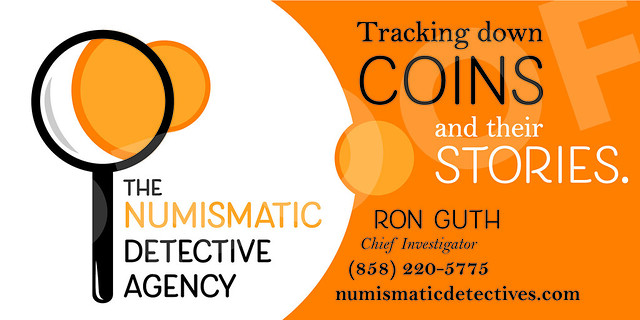
VOCABULARY TERM: METALLIZED SURFACE
Dick Johnson submitted this entry from his Encyclopedia of Coin and Medal Terminology. Thanks. -Editor
Metallized Surface A nonmetallic surface which is treated to make it appear as metal or to contain some property of metal, as being electrically conductive. Such surfaces are so treated in electrogalvanic work and in certain finishes in the medallic field. A plaster pattern, for example, can be metallized as a first step in forming an electrogalvano. This can be accomplished with a liquid solution (containing minute particles of metal in suspension), or in powder or paste form. Graphite and bronze powders (actually pure copper) are common metallizing agents. Flash metallizing, using a liquid, employs a solution that evaporates rapidly leaving the coated surface with a uniform layer of metal flakes. In electrogalvanic work the metallizing agent not only acts as a primer to start the electrodeposition (because it conducts electricity), but also as a release agent after the form is ready to be separated from the pattern. See electrodeposition.
Looking for the meaning of a numismatic word, or the description of a term? Try the Newman Numismatic Portal's Numismatic Dictionary at: https://nnp.wustl.edu/library/dictionary
Or if you would like a printed copy of the complete Encyclopedia, it is available. There are 1,854 terms, on 678 pages, in The Encyclopedia of Coin and Medal Technology. Even running two a week would require more than 19 years to publish them all. If you would like an advance draft of this vital reference work it may be obtained from the author for your check of $50 sent postpaid. Dick Johnson, 139 Thompson Drive, Torrington, CT 06790.
REV. MARK RICHARDS WATKINSON (1824-1877)
Watkinson, Rev. Mark Richards (1824-1877), born October 24, 1824 in Camden, New Jersey. He married Sarah E. Griffith (1832-) and they had a son Mark W. Watkinson (1863-). His seminary training was at the University of Lewisburg, Pennsylvania, later named Bucknell University, and then at the Columbian College, now George Washington University, in Washington, D.C. In October 1850 he first served at the First Particular Baptist Church in Ridley or Ridleyville, Pennsylvania. On June 10, 1852 he was ordained a Baptist minister at Ridley, Pennsylvania.
THE BOOK BAZARRE
ZECHMAN, FEITL RECEIVE ANA 2020 SCHOLARSHIPS
Congratulations to Abby Zechman and Colin Feitl on being awarded ANA 2020 College Scholarships. Here's the press release. -Editor
The American Numismatic Association (ANA) has awarded 2020 college scholarships to Abigail Zechman from Clermont, Florida and Colin Feitl from Hebron, Kentucky. Each winner will receive a $1,000 scholarship to use toward tuition at an institution of their choice.
"The annual scholarship is an opportunity for the American Numismatic Association to expand on its core mission of education through higher learning," said Rod Gillis, ANA education director. "There were many qualified candidates but the commitment of these two young people to numismatics is unparalleled. We are most proud of their accomplishments and are happy to help with their educational endeavors." The recipients are eligible to receive the scholarship for up to four years.
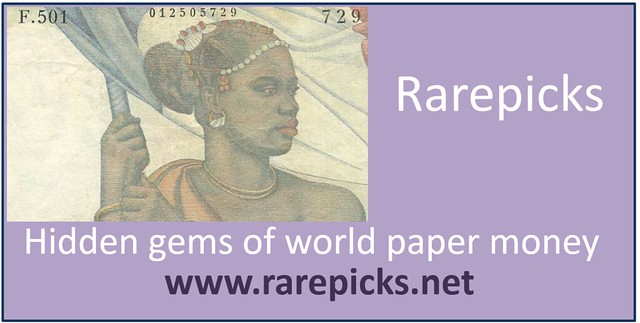
S.S. CENTRAL AMERICA TREASURES IN GOLDBERG'S SALE
Here is the press release about items recovered from the wreck of the S.S. Central America in the September 2020 Goldberg's auction. -Editor
Treasure In Goldberg's September 2020 Auction
Tied for finest known 1856-S dime, rare 1856-S/s quarter, miner's gold dust and coins from fabled ship's safe among highlights
Historic sunken treasure from the California Gold Rush recovered from the fabled S.S. Central America which sank in 1857 will be offered to the public for the first time in an auction to be conducted in September in Los Angeles, California and online by Ira & Larry Goldberg Auctioneers ( www.GoldbergCoins.com).

1856 S over s Quarter
"One of the important highlights is a major numismatic discovery from the legendary ship: an extremely rare 1856 San Francisco Mint Liberty Seated No Motto quarter-dollar with a large S mint mark punched over a small s. It was discovered in a canvas bag in the purser's sealed iron box in the ship's safe on the seabed more than 7,000 feet below the Atlantic Ocean's surface,” said Dwight Manley, Managing Partner of the California Gold Marketing Group (CGMG).
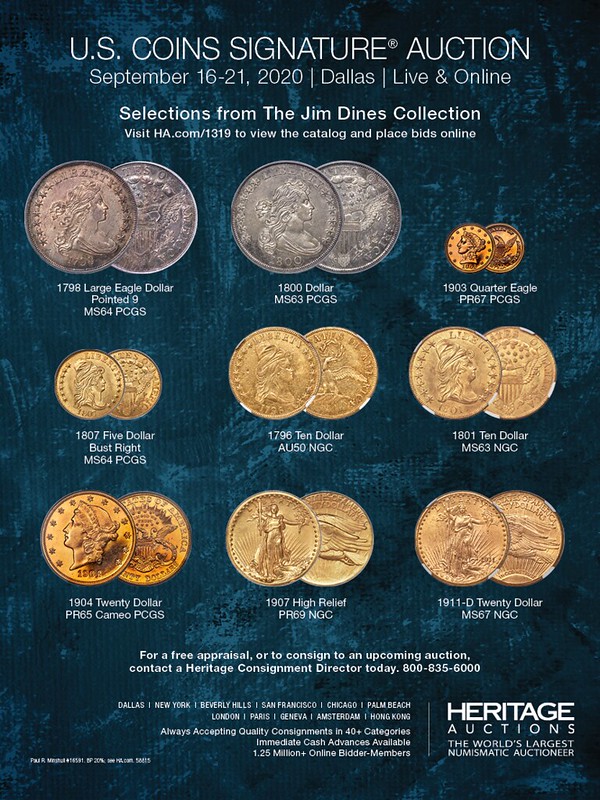
2020 ANA INNOVATION DOLLAR NGC SLAB OFFERED
The Pennsylvania Association of Numismatists teamed up with Numismatic Guaranty Corporation® to offer a special sample slab for Innovation Dollars honoring Dr. Jonas Salk's polio vaccine. -Editor
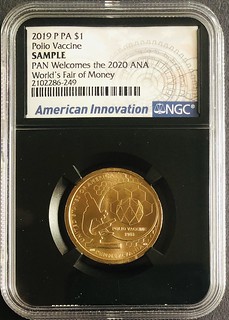 The August 4th – 8th ANA Convention cancellation disrupted plans that were already in place to enhance the weeklong event. The Pennsylvania Association of Numismatists made arrangements to host another "Welcome to Pittsburgh” dinner at the beautiful Le Mont Restaurant atop Mount Washington overlooking the fork of the Ohio River. Part of the attendee's goodie bag was to include a custom label NGC holder 2019 Pennsylvania Innovation Dollar that ironically featured the 1953 discovery of the Polio Vaccine by University of Pittsburgh researcher Dr. Jonas Salk. NGC was to be a Platinum Sponsor of the dinner. The Covid-19 pandemic has created havoc across the globe and forced many cancellations and disruptions affecting everyone's life today.
The August 4th – 8th ANA Convention cancellation disrupted plans that were already in place to enhance the weeklong event. The Pennsylvania Association of Numismatists made arrangements to host another "Welcome to Pittsburgh” dinner at the beautiful Le Mont Restaurant atop Mount Washington overlooking the fork of the Ohio River. Part of the attendee's goodie bag was to include a custom label NGC holder 2019 Pennsylvania Innovation Dollar that ironically featured the 1953 discovery of the Polio Vaccine by University of Pittsburgh researcher Dr. Jonas Salk. NGC was to be a Platinum Sponsor of the dinner. The Covid-19 pandemic has created havoc across the globe and forced many cancellations and disruptions affecting everyone's life today.
PAN has decided to make the 300 special label NGC slabs available to the public at $19.95 each (free shipping in the U.S.) The money raised will be used for numismatic education with a primary focus on young people and the PAN KidZone next scheduled for Saturday October 31st as part of the PAN Fall Coin Convention scheduled for October 29-31, 2020 at the Monroeville Convention Center, a Pittsburgh suburb. The Covid-19 situation this fall will determine if the PAN Coin Show will be able to take place.
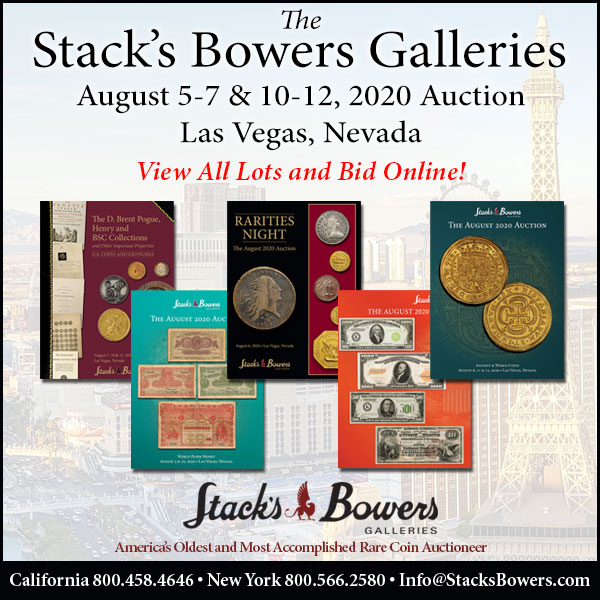
WOKEFIELD IRON AGE GOLD COIN FIND
A nice group of eight gold staters discovered in Wokefield, a town south of Reading, England has been published by the West Berkshire Museum. Found via The Explorator newsletter. To subscribe to Explorator, send a blank email message to: explorator+subscribe@groups.io. -Editor
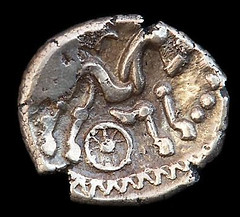 IN 2017, four metal detectorists were investigating an area in Wokefield parish, West Berkshire, when they discovered eight gold coins scattered over an area of approximately 30 square metres.
IN 2017, four metal detectorists were investigating an area in Wokefield parish, West Berkshire, when they discovered eight gold coins scattered over an area of approximately 30 square metres.
As experienced detectorists they knew that they had found a hoard and that it was probably Treasure, so they reported it to a portable antiquities scheme finds liaison officer, a legal requirement under the Act. The coins were very unusual and were identified as ‘Selsey Two-Faced' staters, dated to 60-20 BC. Each of the coins depicts a three-tailed horse, a high status symbol in the Iron Age, on one side and a wide variety of faces, figures and symbols on the reverse, including a charioteer's arm, a chicken and a stylised stalk of wheat or barley.
COINAGE OF THE EMPRESS IRENE
A recent article in Mike Markowitz's CoinWeek Ancient Coin Series discusses the Byzantine Empress Irene. Here's an excerpt, but be sure to read the complete article online. -Editor
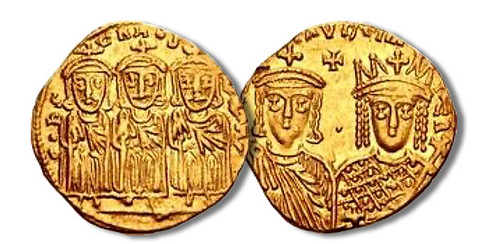
Constantine VI & Irene, with Leo III, Constantine V, and Leo IV. 780-797. AV Solidus (19.5mm, 4.38 g, 6h). Constantinople mint. Struck 790-792. Constantine V, Leo III, and Leo IV seated facing, each crowned and draped / Crowned facing busts of Constantine VI, draped and holding globus cruciger, and Irene, wearing loros and holding globus cruciger and cruciform scepter; cross above, • between. DOC 1; SB 1593. Good VF. Classical Numismatic Group Auction 114, 13 May 2020, Lot: 1050. Price realized: 2,750 USD.
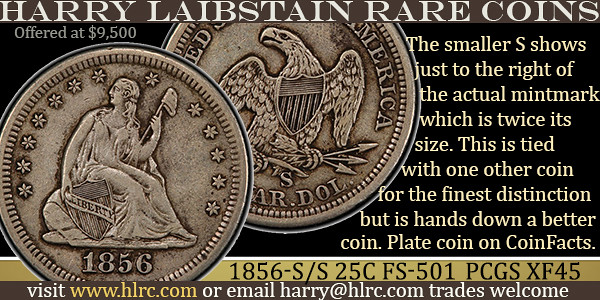
WAYNE'S NUMISMATIC DIARY: JULY 26, 2020
The coronavirus pandemic has shut down most public gatherings, and it has been months since we've held a dinner of my Northern Virginia numismatic social group Nummis Nova. This week we held our first video meeting via Zoom thanks to the sponsorship and emceeing of member Aaron Packard. Attendees included Aaron and myself, Mike Packard (no relation), Joe Esposito, Julian Leidman, Tom Kays, and Bill Eckberg attending from his retirement haven of West Palm Beach, FL.
It was nice to "see" everyone again onscreen. The video and audio worked pretty well once we got past some initial hurdles. We've already made plans to hold another one next month.
The format was basically an online show and tell. While we were addressing some technical issues I gave an overview of the now-defunct ANA Edition of The E-Sylum and noted how former ANA readers were piling in to subscribe to the regular Sunday night issue. We added several new subscribers during the course of the evening.
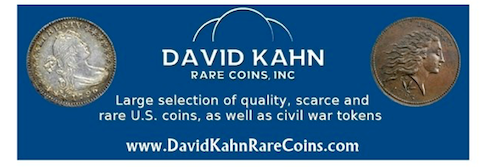
TRUMP PRESIDENTIAL MEDAL DESIGNS RECOMMENDED
The CCAC and CFA have recommended designs for the Trump Presidential Medal. -Editor
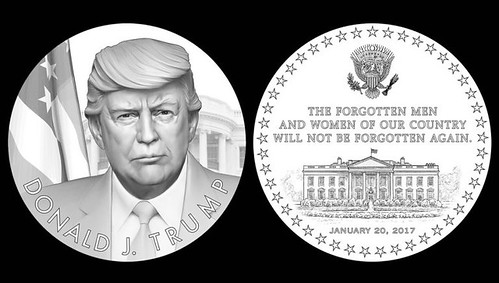
Designs for the Donald J. Trump Presidential Medal have been recommended by the Commission of Fine Arts (CFA) and by the Citizens Coinage Advisory Committee (CCAC).
After the final designs are officially selected, the United States Mint will eventually transfer them onto bronze and silver medals and offer them for sale to the public. The U.S. Mint produces Congressional and numerous list medals, and has been tasked with striking Presidential medals in bronze since the early days of the nation. In 2018, the Mint also started making Presidential silver medals which shared designs from the earlier issued Presidential bronze medals.
TRUMP-REAGAN FUNDRAISING COIN KERFUFFLE
Meanwhile, a Trump fundraising effort has triggered a spat between the campaign and the Ronald Reagan foundation. -Editor
President Trump lashed out at the Ronald Reagan Presidential Foundation and Institute on Sunday following a report that it had requested the Trump campaign stop using President Reagan's name and image in fundraising.
The organization made its request last week after the Trump campaign had sent an email asking for a donation of $45 or more to enter to receive a "limited edition” set of two gold-colored coins that had images of Trump and Reagan.
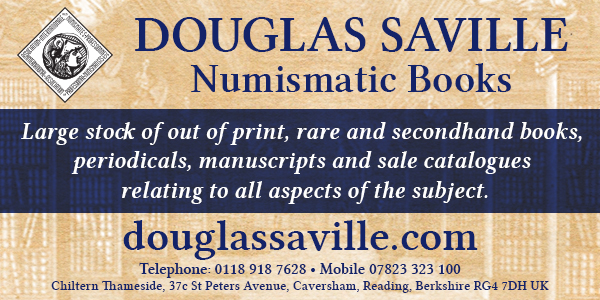
THE FIVE UNIQUE SPEELMAN-WHITE UNCUT SHEETS
In their July 16, 2020 Currency News email newsletter, Heritage Auctions published a nice writeup on the five unique Speelman-White uncut sheets being offered in their upcoming August 3, 2020 sale. Great notes! -Editor
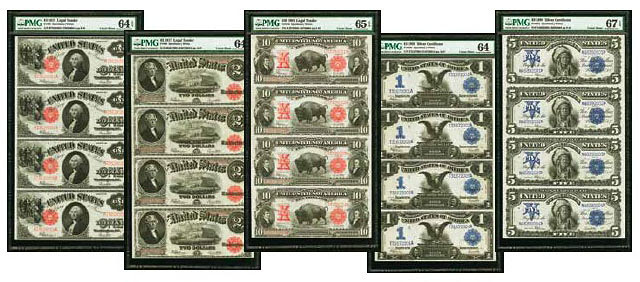
From July 1885 through the middle of 1910, the Bureau of Engraving and Printing delivered all notes to the Treasury Department in the form of uncut sheets, to be separated at the Treasury. Prior to that, and once again starting in June 1910 continuing to the present, the BEP delivered notes to the Treasury fully printed and separated. During those periods, Treasury officials would need to have made a special request to the BEP to obtain uncut sheets.
The Bureau of Engraving and Printing still possesses Treasury Department ledgers and indices recording the note deliveries from the BEP to the Treasury. These records are of particular interest here because they document the first step in the remarkable provenance of the five unique Speelman-White uncut sheets now being offered in Heritage Auctions' August 3rd ANA Platinum Night auction at our world headquarters in Dallas.
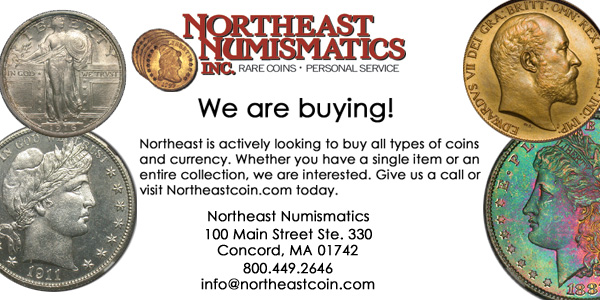
GRINNELL SERIES 1914 AND 1918 FRN PROOFS
There's an even more remarkable group of notes in the August Heritage sale. Also described in the July 16, 2020 Currency News email newsletter are the crowning gems of the legendary Albert Grinnell paper money collection, a binder of eighteen individual Proofs of Series 1914 and 1918 Federal Reserve notes of each denomination. Amazing! -Editor
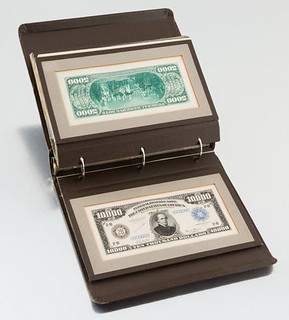 There is a saying that old paper money offers the opportunity to hold history in your hands. This fantastic group of Proofs is perhaps the most outstanding example of that concept known in the field of paper money collecting today. This unique set comprises both face and back Proofs of Series 1914 and 1918 Federal Reserve notes of each denomination: $5, $10, $20, $50, $100, $500, $1000, $5000, and $10,000, all housed in a specially prepared, custom binder.
There is a saying that old paper money offers the opportunity to hold history in your hands. This fantastic group of Proofs is perhaps the most outstanding example of that concept known in the field of paper money collecting today. This unique set comprises both face and back Proofs of Series 1914 and 1918 Federal Reserve notes of each denomination: $5, $10, $20, $50, $100, $500, $1000, $5000, and $10,000, all housed in a specially prepared, custom binder.
On December 23, 1913, President Woodrow Wilson signed into law the Federal Reserve Act, which transformed the American monetary system. Throughout the next year, various prototype designs were produced and considered, until a standardized design was finalized in the fall of 1914. As a part of the design process, a small quantity of Proof examples was produced. These Proofs were printed from the actual currency plates onto card stock. The Treasury seal and the all zero serial numbers were glued on by hand by the pressman. Though the 1916 Annual Report of the Bureau of Engraving and Printing noted two sets of the $5 to $100 denominations produced, we know of additional (perhaps five) sets of Series 1914 Proofs that were presented by Secretary of the Treasury, William G. McAdoo, to a select group of officials in late 1914.
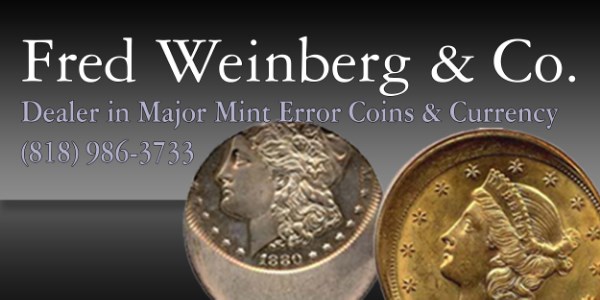
COSTA RICA ISSUES NEW POLYMER BANKNOTES
Costa Rica has issued a new series of polymer banknotes. -Editor

The Banco Central de Costa Rica (Central Bank) will put into circulation a new denomination of banknotes similar to the material used in the ¢1.000 notes currently in circulation.
The new notes are made of a polymer substrate, a compound similar to plastic, but which makes it recyclable. This material makes the notes more resistant and durable and will allow the material to be reused when they reach their useful life.
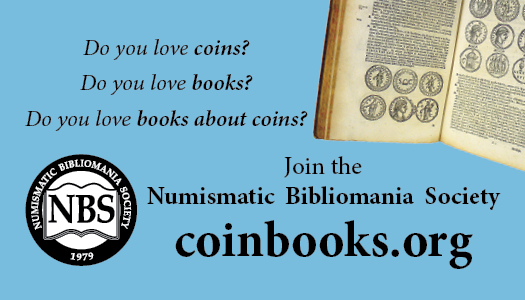
INDIAN INDEPENDENCE BRITISH NOTE COUNTERFEITS
This article from Al Jazeera mentions a British banknote counterfeiting scheme in India. I'm not familiar with this - can anyone provide more information? Are any of these notes in collector hands, like the Operation Bernhard Nazi counterfeits? Here's an excerpt. -Editor
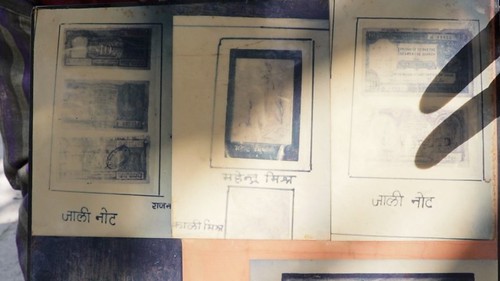
Most people know Mahendra Mishra (or Misir) as a noted folk singer from the region, credited with popularising the Poorvi genre of Bhojpuri music, which also includes Kajri, Baramasa, Jatsaar and Chait, popular in parts of Bihar and neighbouring Uttar Pradesh state.
But few are aware that Mishra also ran a clandestine operation in the first half of the 20th century, printing fake currency notes to fund the freedom fighters leading the struggle for India's independence from the British colonial rulers.
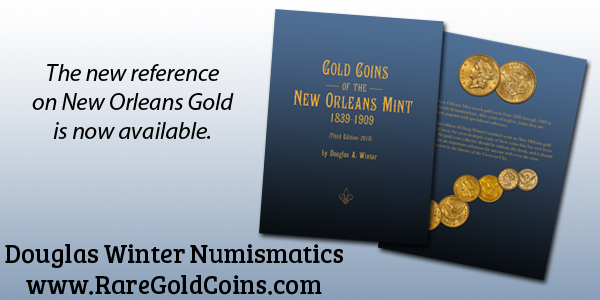
THE NEW YORK FEDERAL GOLD VAULT
Pablo Hoffman passed along this Atlas Obscura piece about the gold vault at the New York Federal Reserve Bank. Thanks. He adds, "These bars can get you intoxicated, but not drunk . . . " -Editor
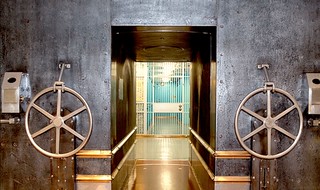 THE LARGEST ACCUMULATION OF GOLD in human history is located deep underneath the heart of Manhattan's financial district, at the New York Federal Reserve Bank. Some 80 feet beneath sidewalk level, the Fed's special vault is built into the bedrock and entrusted with deposits from central banks across the globe. Inside sits 7,000 tons of glittering gold bars—around 5 percent of all of the gold ever mined.
THE LARGEST ACCUMULATION OF GOLD in human history is located deep underneath the heart of Manhattan's financial district, at the New York Federal Reserve Bank. Some 80 feet beneath sidewalk level, the Fed's special vault is built into the bedrock and entrusted with deposits from central banks across the globe. Inside sits 7,000 tons of glittering gold bars—around 5 percent of all of the gold ever mined.
The only way into the vault is via a cylindrical entryway that rotates at the turn of a wheel. A sliver-shaped pie chunk of the cylinder has an opening, and when properly aligned with the entry hallway allows access to the treasure inside. Inside there are 122 separate mini-vaults (one for every country), plus a "library vault” for account holders with smaller deposits.
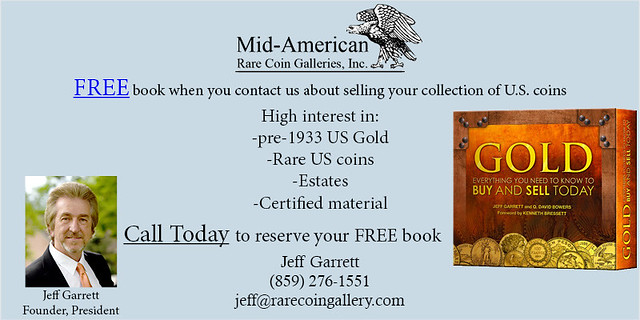
LOOSE CHANGE: JULY 26, 2020
Here are some additional items in the media this week that may be of interest. -Editor
CoinWeek Podcast: 1822 $5 vs. the 1870-S $3
The July 23, 2020 CoinWeek Podcast features a showdown between two legendary U.S. rarities. -Editor
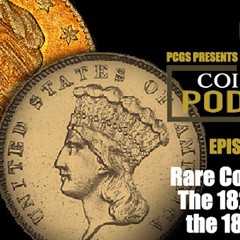 It's a battle of epic proportions today on the CoinWeek Podcast, as noted gold coin expert and author Doug Winter and I pit two multi-million dollar coins head to head to find out which great American rarity comes out on top.
It's a battle of epic proportions today on the CoinWeek Podcast, as noted gold coin expert and author Doug Winter and I pit two multi-million dollar coins head to head to find out which great American rarity comes out on top.
Our competitors are the 1822 half eagle and the 1870-S three-dollar gold coin.
Which of these coins will come out on top? You're about to find out next, on the CoinWeek Podcast.
To read the complete article, see:
CoinWeek Podcast #138: Rare Coin Battle: The 1822 $5 Gold Coin vs. the 1870-S $3 Gold Coin
(https://coinweek.com/coins/million-dollar-items/coinweek-podcast-138-rare-coin-battle-the-1822-5-gold-coin-vs-the-1870-s-3-gold-coin/)
Other topics this week include Stamps and Spies.
PLAYFUL ORIGAMI USING BANKNOTES
This article from The Guardian highlights some fun origami using banknotes from Japanese illustrator Yosuke Hasegawa. -Editor
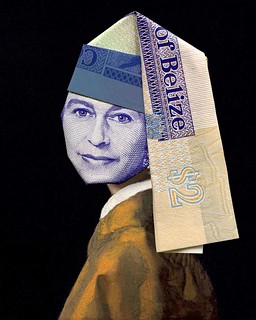 Playful origami using banknotes – in pictures
Playful origami using banknotes – in pictures
Yosuke Hasegawa has been making "money origami” for the past 14 years. The artist, who is based in Taiwan, has created hundreds of artworks out of banknotes from all over the world, each piece using an improvised technique.
"I take an image of a rigid historical person and change them into something cute and funny,” he says.
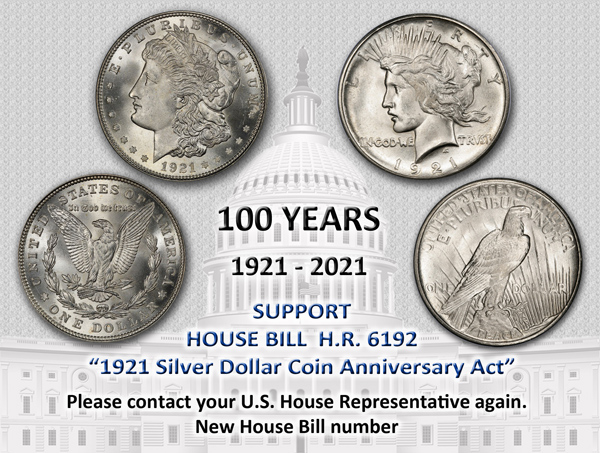
FEATURED WEB PAGE: LATIN AMERICAN BANKNOTE MAPS
This week's Featured Web Page is an article by Miguel Chirinos about Historical Maps on Latin American Paper Money.
Since 1870, the American Bank Note Company in the United States was responsible for printing the majority of the paper money used in the Latin American countries. In that time, most of the private banks issued banknotes including some allegorical vignettes for commerce and industry. For instance, a series of notes of Banco de Panama (Colombia) shows a globe with a map of the American continent at center (S722-725). Probably those are the first notes (dated ca.1869) with a map in Latin America's history. Also, a similar design on 50 pesos of El Banco Nacional de los Estados Unidos de Colombia (1880) and on 100 dollars of Hawaiian Islands (1879).
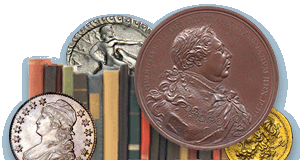
The E-Sylum is an electronic publication of the Numismatic Bibliomania Society
Copyright © 1998 - 2025
The E-Sylum is an electronic publication of the Numismatic Bibliomania Society
Copyright © 1998 - 2025
